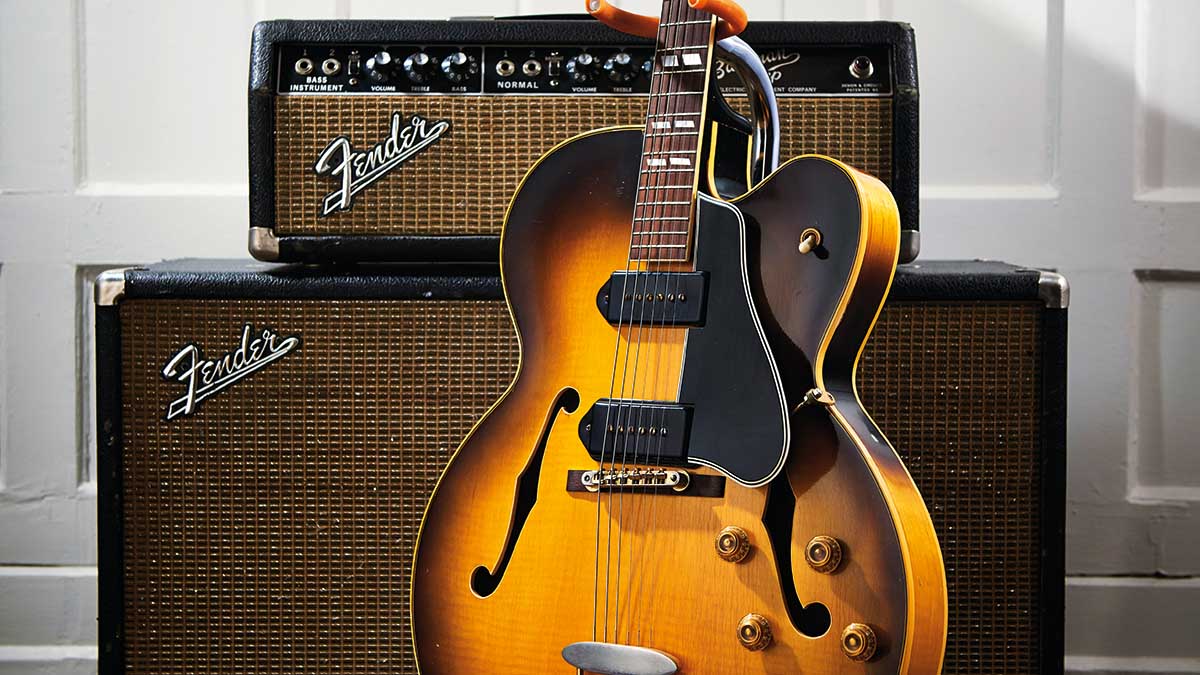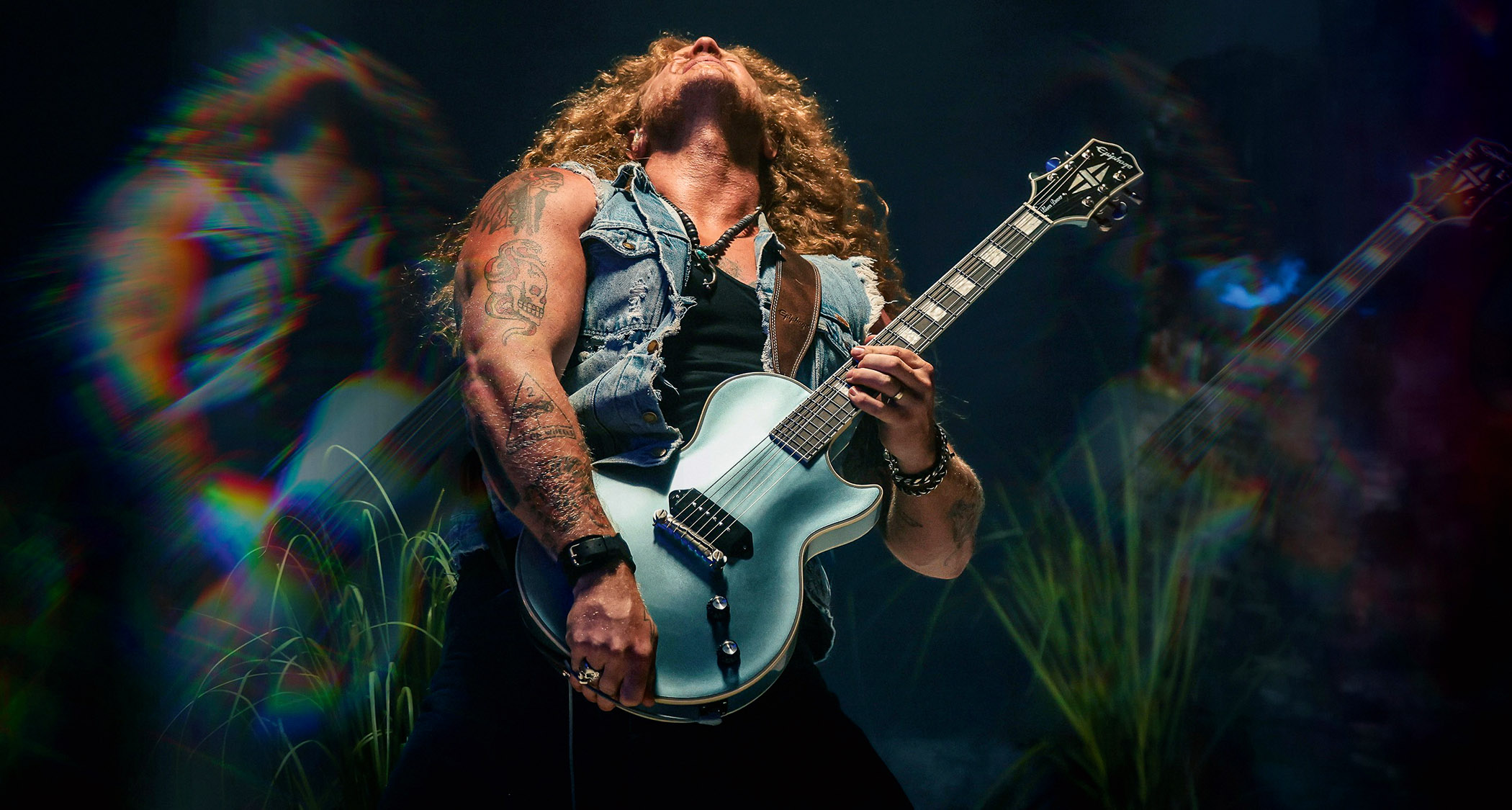Classic gear: Gibson ES-350T
The history of the revolutionary thinline hollowbody that became a leading voice in rock ’n’ roll

In 1954, Gibson was left in little doubt about which direction guitars were headed in as electrics outsold acoustics for the first time in the company’s history.
By this stage, the best part of two decades had passed since its first electric Spanish – the ES-150 – was unveiled to the public, and within that time, the popularity of the electric guitar had gained serious momentum.
As the instrument really began to capture the imagination of the latest generation of musicians, fresh styles and sounds emerged, permeating American popular culture from coast to coast via record, radio and the powerful new medium of television. The golden age of rock ’n’ roll was fast approaching.
With the release of the Les Paul Model/Goldtop in 1952, followed by the Les Paul Custom, Junior and TV in ’54, solidbody electrics were proving in demand. Nevertheless, while some players enjoyed their resistance to feedback and thinner 1 3/4-inch body depth, others still preferred the look, sound and feel of Gibson’s more traditional 3 3/8-inch-deep electric jazzboxes.
Thus, the Gibson team – which was spearheaded by president, Ted McCarty – set about developing a concept that would strike a balance between the slinkier, more progressive design of its solidbody guitars and the good, old‑fashioned full-body archtops.

With input from two of the most prominent guitarists of the time, Billy Byrd and Hank Garland, the first of Gibson’s new thinline guitars were prototyped and recorded in a factory ledger as “special thin model” L-5CESes in April 1955. From there, this premium carved-top design was refined for regular production and subsequently dubbed the ‘Byrdland’.
1955
Introduced as ES-350T/N; sunburst or natural (with ‘N’) finish; dual P-90s; 2 shipped 1956 c.220 shipped
1957
PAF humbuckers; ‘ES-350 T’ engraved on tailpiece; c.225 shipped (peak)
1959
Redesignated ES-350TD/N; nut width changes from 1 5/8 to 111/16 inches
1960
Florentine/sharp cutaway; shorter pickguard
1961
c.80 guitars shipped
1962
Neck changes from 2- to 3-piece laminated maple
1963
Discontinued
1977
Reintroduced as ES-350T; Natural, Fireburst and Sunburst finishes; 25 1/2-inch scale
2019
Chuck Berry 1955 ES-350T; Antique Natural finish; limited run of 55
Making its debut at the July 1955 NAMM show and costing $550 in Sunburst or $565 in Natural, it appeared alongside the mid-priced ES-350T (marked up at $155 less in either finish) and the “popular priced” $179.50 Sunburst ES-225T.
All the latest guitar news, interviews, lessons, reviews, deals and more, direct to your inbox!
As per its full-body predecessor, the ES-350 (originally released in 1947 as the ES-350P and phased out during ’56 when its thinline/‘T’ successor began shipping in earnest), the ES-350T measures 17 inches in width, although it boasts a thinner body depth of 2 1/4 inches, as opposed to 3 3/8 inches.
Along with a shorter 23 1/2‑inch scale length and narrower 1 5/8-inch nut width, it shares these dimensions with the top-of-the-line Byrdland, while the 16 1/4-inch-wide ES-225T/D thinlines feature the standard Les Paul/solidbody 1 3/4-inch depth and 24 3/4-inch scale length.
Whereas the Byrdland boasts an L-5CES‑style ebony fingerboard, solid maple back and sides and carved spruce top, the ES-350T is constructed with laminated maple and features a rosewood fretboard with double parallelogram inlays.
From ’57, ES-350Ts were fitted with a pair of humbuckers in place of dual ‘dog-ear’ P-90s, although this upgrade did nothing to improve the model’s sales, which steadily declined after peaking that year, and it was eventually discontinued in ’63.
It was briefly reintroduced in 1977, albeit with a long 25 1/2-inch scale length, before disappearing from production again in the early 80s. More recently, in 2019, Gibson unveiled the Chuck Berry 1955 ES-350T signature model in honour of the ES-350T’s most famous proponent – the father of rock ’n’ roll himself.

Rod Brakes is a music journalist with an expertise in guitars. Having spent many years at the coalface as a guitar dealer and tech, Rod's more recent work as a writer covering artists, industry pros and gear includes contributions for leading publications and websites such as Guitarist, Total Guitar, Guitar World, Guitar Player and MusicRadar in addition to specialist music books, blogs and social media. He is also a lifelong musician.

